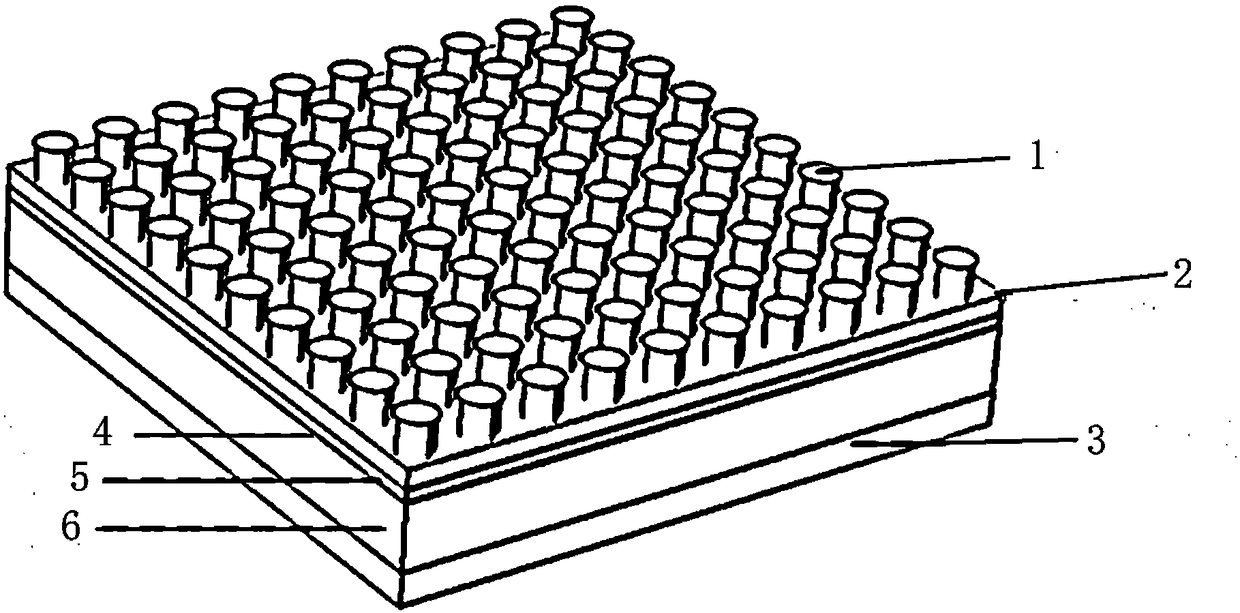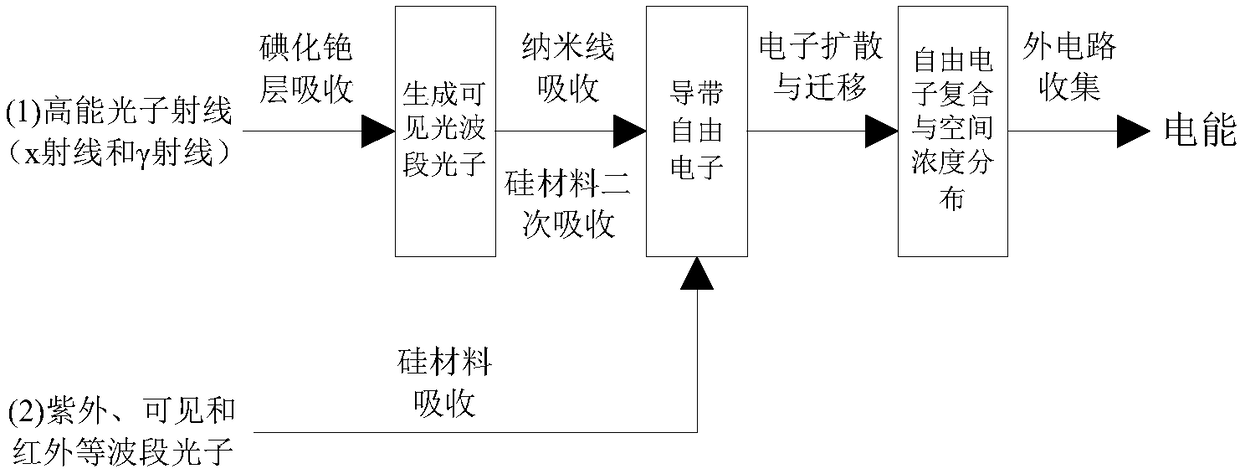Spaceborne Ray Energy Nanobattery
A ray and battery technology, applied in nanotechnology, nanotechnology, circuits, etc., can solve the problems of nuclear battery output power reduction, radiation protection, application limitations, etc., to achieve structural reuse, reduce solar energy dependence, and improve conversion efficiency. Effect
- Summary
- Abstract
- Description
- Claims
- Application Information
AI Technical Summary
Problems solved by technology
Method used
Image
Examples
Embodiment Construction
[0029] The present invention will be described in detail below in conjunction with specific embodiments. The following examples will help those skilled in the art to further understand the present invention, but do not limit the present invention in any form. It should be noted that those skilled in the art can make several changes and improvements without departing from the concept of the present invention. These all belong to the protection scope of the present invention.
[0030] The present invention proposes a space-borne ray-energy nano-battery. The space-borne ray-energy nano-battery sequentially includes: a silicon nanowire, a cesium iodide layer, a depletion region, a bulk silicon emitter and a base, and a back plate;
[0031] The silicon nanowires are used to absorb light in the ultraviolet band, visible band and infrared band to generate free electrons, and increase the power density through photon energy convergence;
[0032] The cesium iodide layer is used to ab...
PUM
 Login to View More
Login to View More Abstract
Description
Claims
Application Information
 Login to View More
Login to View More - R&D
- Intellectual Property
- Life Sciences
- Materials
- Tech Scout
- Unparalleled Data Quality
- Higher Quality Content
- 60% Fewer Hallucinations
Browse by: Latest US Patents, China's latest patents, Technical Efficacy Thesaurus, Application Domain, Technology Topic, Popular Technical Reports.
© 2025 PatSnap. All rights reserved.Legal|Privacy policy|Modern Slavery Act Transparency Statement|Sitemap|About US| Contact US: help@patsnap.com


